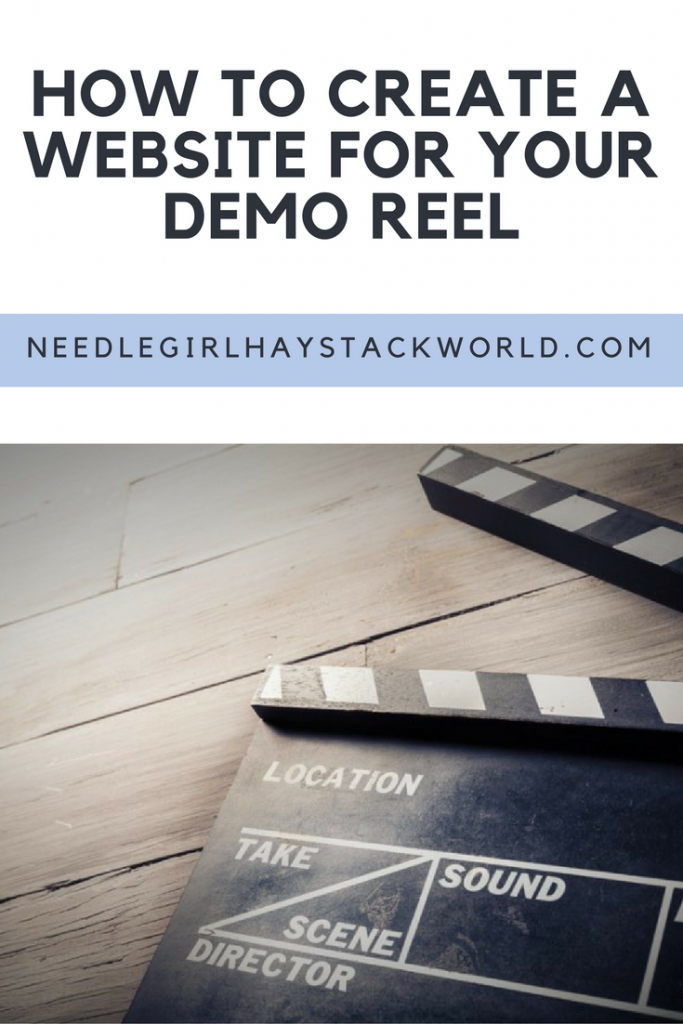If you’re an aspiring director, editor, DP, shooter, or producer, there are several benefits to having a website to reference your work, particularly if you’re vying for jobs where the executives aren’t familiar with you. And hey, we work in a visual industry — it makes a LOT more sense to show your videos rather than expect mere words on a page to paint the same artistry.
Another benefit to having your own webpage? If you’re looking to get into a smaller niche, there’s a better chance of people finding you through Google searches.
So! Let’s dive in and build a website to display your reel. (Remember, you can write off all of these expenses on your taxes!)
1. Choose a Domain and Hosting
What should the domain for your site be? First and last name is a classic choice. Others who are self-incorporated use their business name, such as FilmBreeze or CameraGuyTy. (Self-incorporating is a wise tax move, even if you never plan to operate a full-fledged production company).
Next, your website will need hosting. I recommend Bluehost — They’re known for quick customer service, and you’ll get your domain name for free upon signing up. The $6.95/month package also includes unlimited GB, which is a must for streaming video content.
Check if your ideal domain name is available:
2. Download WordPress or Weebly
I created my first website out of raw HTML code back in 1999. It was brutal. Fortunately, there’s NO need to do that these days. If you use Bluehost to purchase your domain and hosting, you’ll have access to WordPress and Weebly, two different site-building tools.
WordPress is fairly intuitive and can be utilized to create almost any style site you want, but there is a learning curve. If you don’t have any web-building experience, I would get started with Weebly. It’s extremely straightforward and utilizes a drag-and-drop system. Here’s an informative (and short!) how-to video.
3. Design the Layout
When it comes to directors, DPs, and producers, I’ve seen elaborate websites — but the majority of them are very simplistic, letting the videos take the focal point (as they should). Most use Vimeo or YouTube to embed the videos within their site.
Most of the time on director webpages, there’s no fancy text, background, or effects. It’s just a name in text at the top of a standard webpage with video thumbnails.
Remember, you’re marketing yourself as an expert in video, not web design. The site just has to be functional and give a clean, clear representation of your work.
Here are examples of actual director’s websites: Here, here, here, here.
If you choose the WordPress route: You’ll need to download a Theme (WordPress lingo for “layout” or “site design”). Themes can either be free or paid — and paid themes are generally easier to implement. ThemeForest has dozens of professional minimalist themes for as little as $19.
Personally, I haven’t had much luck using free WordPress themes. There’s no one to get support help from, and you end up having to teach yourself CSS coding and lose way more time than if you would’ve just bought a $20 theme. However, if you want to give it a try, Snaps, Gridster Lite appear to be decent themes for hosting videos. For something with a little more pizzazz, try Shapely.
4. Create Your Contact Page (and Resume Page)
This seems like common sense, but in the midst of creating art, we can be a little blind to the basics sometimes…but DON’T FORGET TO PUT YOUR CONTACT INFO ON YOUR PORTFOLIO AND REEL.
Your contact page should include: Your full name, your phone number, your e-mail address… and maybe links to your social media accounts if they’re buttoned up and display other pieces of your work not featured in your reel.
If you’re a director, producer, or DP, a resume page is optional, because your reel is your resume. I’ve seen other industry professionals create a page with a gallery of client logos, or if you’re feeling savvy, links to 2-3 minute versions of each project.
5. Include Your Web Address on Business Cards, E-Mail Signatures, etc.
Once your reel is up and running, it’s time to promote it. Remember to blast it on Facebook and add it to the bottom of your e-mail signature. Add it to your formal resume, and for old school networking, get a pack of business cards that include your reel’s website address.
Easy Alternatives to Self-Hosting Your Reel
If the concept of hosting and coming up with the design freaks you out, then the following two steps will elate you:
Step 1. Buy the domain. This is a step you shouldn’t avoid. For a mere $9/year (and less per year if you purchase several years) you can own just the domain — YOURNAME.com, YOURNAMEdp.com, YOURNAMEeditor.com, YOURNAMEproducer.com, etc. For different .tv, it’ll cost a little extra. I use Namecheap for all of my domains.
Step 2. Have YOURWEBSITE.com or ME.tv autodirect to an existing portfolio site builder. Instead of building your demo reel website from scratch, there are a handful of site builders specializing in demo reels in exchange for a monthly or annual fee. CargoCollective.com (free for the bare bones package, $66/year or $9/month for services) and Virb.com ($10/month) are two examples of portfolio site builders that support video. There’s also SquareSpace, but they’re pricey at $12/month.
Reel Tips
- Keep the reel as current as possible — Re-evaluate your reel every 6 months to determine if it’s still an accurate depiction of your resume, artistic eye, and abilities.
- Compress your video appropriately — It shouldn’t take 10 years for your reel to load, even if it’s an HD masterpiece. There are ways to compress without sacrificing quality.
- DON’T USE FLASH –– This technology is very dated, and it’s an eyesore. Don’t make me feature your website on my upcoming post entitled World’s Worst Demo Reel Websites.
- Make your reel your homepage — Make the demo reel the first thing that people see. That’s what’s going to get you hired, right?
- If you don’t, then please send the right link with the reel — If you don’t follow that advice and decide to stick your reel on a different page (http://mydemoreel.com/reel), be sure to send the right link to the prospective client. Don’t make them hunt around for it, even if the answer seems obvious.
- Keep the layout basic — For building a reel website, you just need three things: your reel, your contact information, and your resume — but always keep your reel focal point.
Have any questions or in need of minor web consulting? Let me know!
Pin It!:


 I'm Laryssa, and when I'm not working in film or television, I'm attempting to travel -- or I'm here, providing resources for working in film or travel.
I'm Laryssa, and when I'm not working in film or television, I'm attempting to travel -- or I'm here, providing resources for working in film or travel. 









